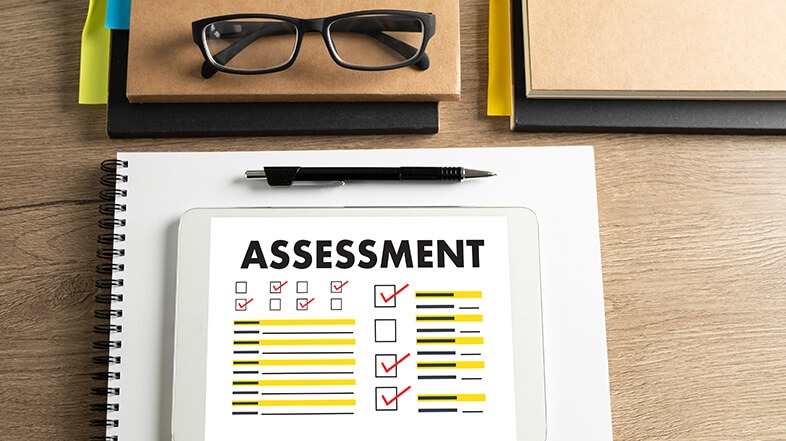
Reclaiming Your Retirement: Catch Up on Retirement Savings after 40
If you’re over 40 and worried about your retirement savings, take a deep breath. You’re not alone, and it’s never too late to turn things around.
In this article, we’re exploring 10 actionable strategies to help you catch up on retirement savings after 40.
#1 Assess Your Current Situation

If you don’t know where you are, you are not going to get a clear picture of what it’s going to take to catch up on retirement savings after 40.
So, your first step is to assess where you currently stand.
#2 Set Realistic Retirement Goals

Now that you have a better understanding of your current situation, set realistic retirement goals.
If you already have a retirement plan, when was the last time you looked at it? Do you know if you’re on track or not? Have your goals for retirement changed in the past few months?
If you created a plan years ago, but haven’t followed it, then hit the reset button and create a new plan.
To get a realistic plan in place, ask these questions:
- At what age do you want to retire?
- How much money will you need, not to just scrape by, but have a fulfilling, comfortable retirement?
- What do you want to do, be, or have in retirement?
Consulting with a financial advisor can be incredibly helpful in tailoring your goals to your unique circumstances.
#3 Prioritize Saving and Investing

Now that you know the gap between your existing savings and your retirement goals, you can formulate a solid savings plan to bridge that divide.
You need to develop a budget and prioritize your retirement savings if you want to catch up on retirement savings after 40.
Take your answers from #1 and #2 and compare where you are now with where you want to be. How much do you need to save each month to reach your goal?
You might need to readjust your expectations and consider making some lifestyle changes now in order to meet your goals. This means cutting unnecessary expenses if you have to.
Max Out Contribution Limits
Do what you can to maximize your retirement accounts this year and every year moving forward.
For 2023, you can contribute $22,500 to your 401(k), 403(b), most 457 plans, and federal Thrift Savings Plans. For those ages 50 and older, the 401(k) catch-up contribution is $7,500.
For Roth and traditional IRAs, the limit for 2023 is $6,500. The catch-up contribution for people ages 50 and over is $1,000.
If maxing out these limits is unrealistic, how much can you contribute?
Even if you only increase your salary deferral by 1% per paycheck, it will make a difference in your income at retirement.
One final note: We can’t emphasize the significance of small steps and consistent effort in catching up so you can have a comfortable retirement.
At Least Get the 401(k) Company Match
If you have a 401(k), at a minimum, you should be contributing at least your company match because it’s basically free money for your future.
How much you receive depends on the terms of your 401(k) plan. Many employers match a percentage of employee contributions, up to a certain portion of the total salary. However, some match employee contributions up to a certain dollar amount.
Whatever your plan rules, make sure you aren’t leaving free money on the table.
[Related Read: 4 Ways to Potentially Maximize Your 401(k) Company Match]
Contribute to an Emergency Fund
Make sure you budget for an emergency fund to avoid derailing retirement plans.
The last thing you want to do is fund your retirement, only to have to withdraw early should an emergency arise. Early withdrawals may be costly thanks to taxes and penalties – and have a negative impact on your retirement lifestyle.
#4 Put Your Retirement before Student Loans

The majority of a student’s undergraduate bill is paid by parents, with 43% of the cost being covered by parents’ income and savings and 8% coming from money parents borrowed, according to a 2022 report by the private student lender Sallie Mae.¹
At the end of 2022, federal data showed the total parent student loan debt is $108.5 billion among 3.7 million borrowers.²
Don’t prioritize saving for your child’s education over your retirement savings – especially if you’re trying to catch up on retirement savings after 40.
It sounds harsh, but the reality is that, if you help your kids out and put your own future second, you may end up only living on social security, having nothing in retirement, and putting a financial burden on your kids.
[Related Read: College Savings Mistakes to Avoid – What to Do Instead]
#5 Rebalance Your 401(k)

Market fluctuations can cause your portfolio to become unbalanced over time, with some investments outpacing others.
The investments you initially chose to help you meet your retirement goals – whether that was 5 years ago or 5 months ago – may no longer be the best alternatives for you now or be aligned with your retirement goals.
This is why it’s important to regularly review and rebalance your portfolio.
Rebalancing is the process of realigning the weightings of the assets (your investments) in the portfolio. This can involve periodically buying and/or selling assets in the portfolio in order to maintain the initial desired level of asset allocation.
It’s not enough to just simply rebalance.
Consider rebalancing based on the current economic and market trends rather than just realigning allocations.
[Related Read: What Every Investor Needs to Know about Rebalancing a 401(k)]
#6 Avoid Target Date Funds

A majority of retirement account investments are in target date funds (e.g., 2030, 2045 funds).
Target date funds are structured to automatically reallocate as you move through different life stages. So, as you age toward your target retirement date, the funds shift toward more conservative investments to protect your money.
For many 401(k) investors, this sounds like a win-win. Invest your money, and let it do its thing until retirement.
But target date funds may be riskier than many people perceive.
Morningstar analyst Jeffrey Holt put it this way, “In the long run, the biggest risk in target-date funds is that they won’t meet investor expectations for avoiding losses.”³
Another reason we recommend avoiding target date funds is, because they are based on the date of retirement, they fail to take into consideration that not all investors are created equal.
If you are currently in a target date fund, we suggest moving away from this option and better utilizing all the options available in your workplace retirement plan. At the very least, rebalance your account.
Check out 5 Ways Target Date Funds Fail to Live Up to Their Promise.
#7 Roll Over Old 401(k)s

If you have changed employers over the years, it’s likely you have some retirement savings accumulated from previous jobs.
If you think this isn’t a big deal, think again.
Leaving behind a 401(k) with a past employer “has the potential to cost an individual almost $700,000 in foregone retirement savings over a lifetime.”⁴
While the potential amount you may be missing out on depends on your balance and fees, it is costing you more than you may think.
For example, you are incurring ongoing fees with a left-behind 401(k), and you may not even realize your old 401(k) may be a high-fee plan.
And you also have another account to keep track of that provides limited investment options.
You have 3 options when it comes to moving your old 401(k):
- Roll over into your new employer’s 401(k), providing it’s allowed.
- Roll over into an IRA or Roth IRA.
- Cash it out.
Cashing out an old 401(k) is not advisable for tax and penalty purposes – and the fact that you want your money growing for you so you can use it later in retirement.
We recommend seeking third-party advice to help you make the best rollover decision possible.
Before you make your move, click here to discover the 5 Costly 401(k) Rollover Pitfalls.
#8 Increase Income and Build a Side Hustle

If it feels as if you’re squeezing blood out of a turnip to find extra cash to meet your retirement goals – you aren’t alone. We’re all experiencing the financial pinch right now.
If you want to catch up on retirement savings after 40, consider exploring opportunities for career advancement or a higher-paying job. Pursue additional training or education to boost earnings potential.
Start a side business or freelance work to generate extra income for retirement.
Remember, every little bit you can save for retirement now adds up and makes a difference in retirement.
#9 Continually Monitor and Adjust Your Plan

It’s not enough to create a plan and let it sit. Regularly review and reassess your retirement strategy to make sure you stay on track.
#10 Get Professional Advice

One of the best things you can do to maximize your retirement savings over 40 is to reach out to a third-party expert.
If you think being in your 40s is too early to seek help, it’s not.
And if you think your balance is too low, it’s not.
Professional 401(k) account management may help reduce retirement stress, save you time and energy, and may help reduce fees.
Although you might have basic investment knowledge, utilizing an expert to do the in-depth market research could change the performance of your account from good to great.
401(k) Maneuver provides professional account management with the goal to help you grow and protect your 401(k).
Our goal is to increase your account performance over time, manage downside risk to minimize losses, and reduce fees that harm your account performance.
There are no time-consuming in-person meetings and nothing new to learn, and you don’t have to move your account.
Simply connect your account to our secure platform, and we regularly review and rebalance your account for you, when necessary. Click here to see how it works.
If you have questions about your 401(k) or if you need help, we’re here for you. Click below to book a complimentary 15-minute 401(k) Strategy Session.
Book a 401(k) Strategy Session
Sources:
1.https://www.salliemae.com/content/dam/slm/writtencontent/Research/HowAmericaPaysforCollege2022.pdf
2.https://www.salliemae.com/content/dam/slm/writtencontent/Research/HowAmericaPaysforCollege2022.pdf
3.Special Report: Fidelity puts 6 million savers on risky path to retirement, Reuters.com March 5, 2018
4. https://www.hicapitalize.com/resources/the-true-cost-of-forgotten-401ks/








